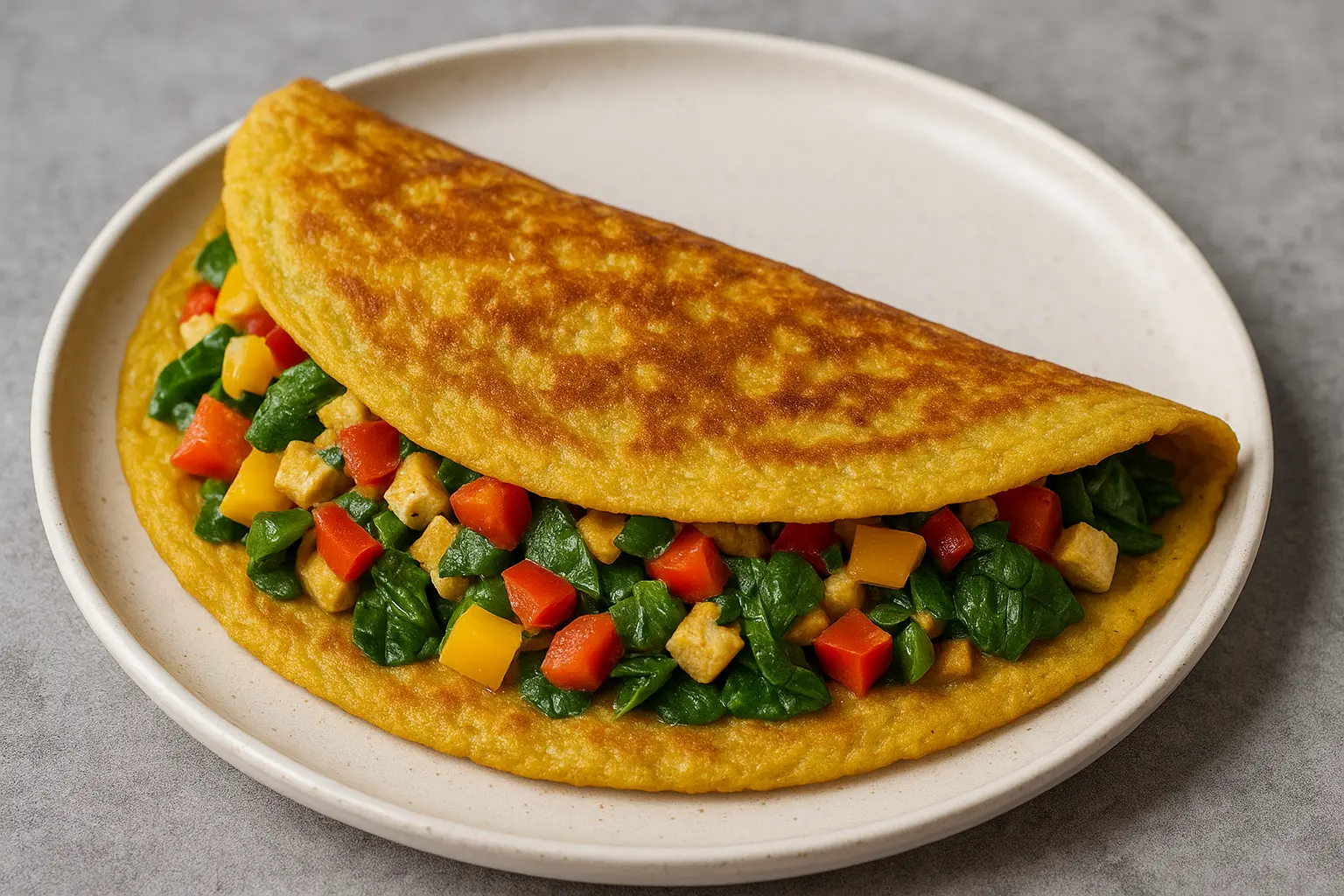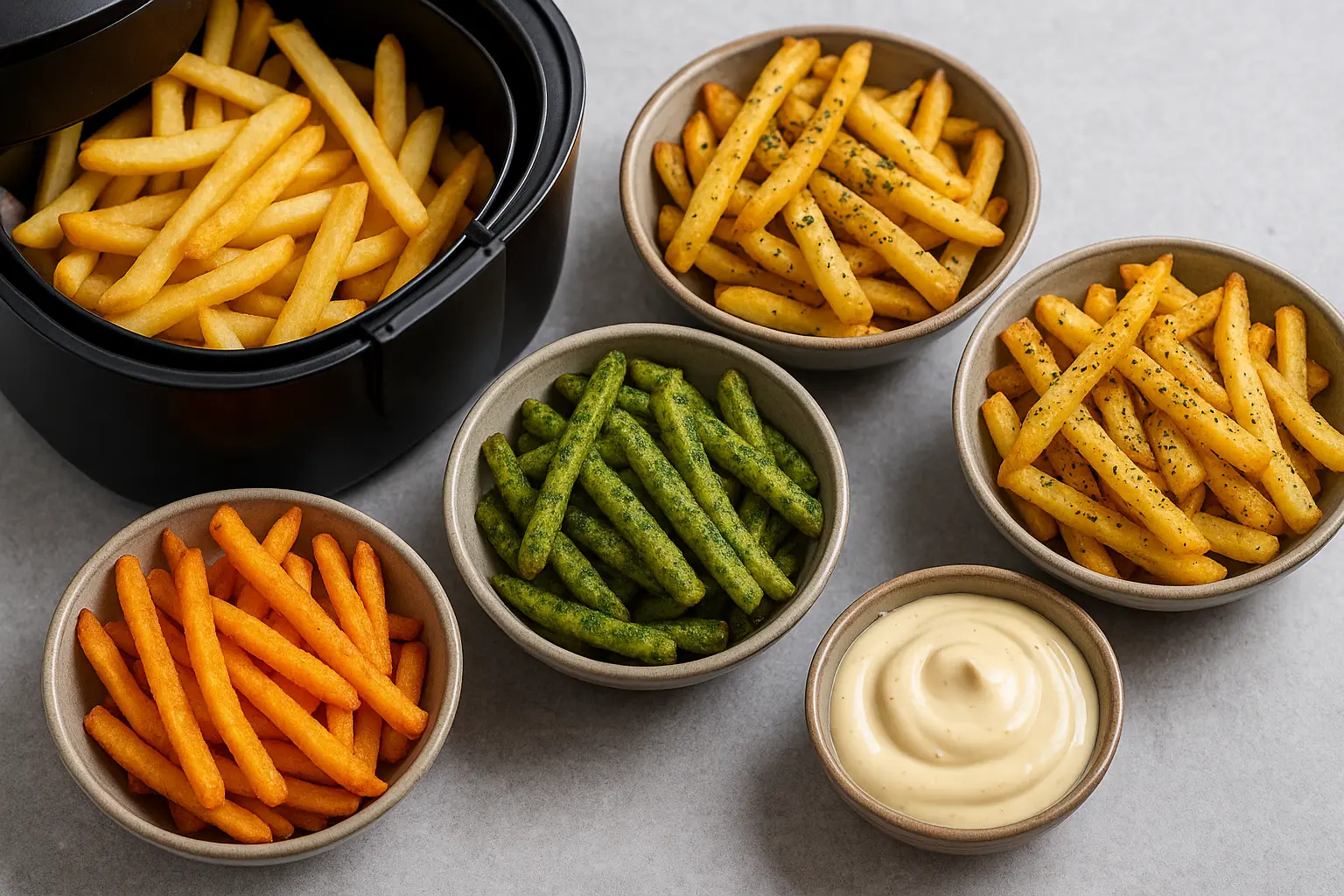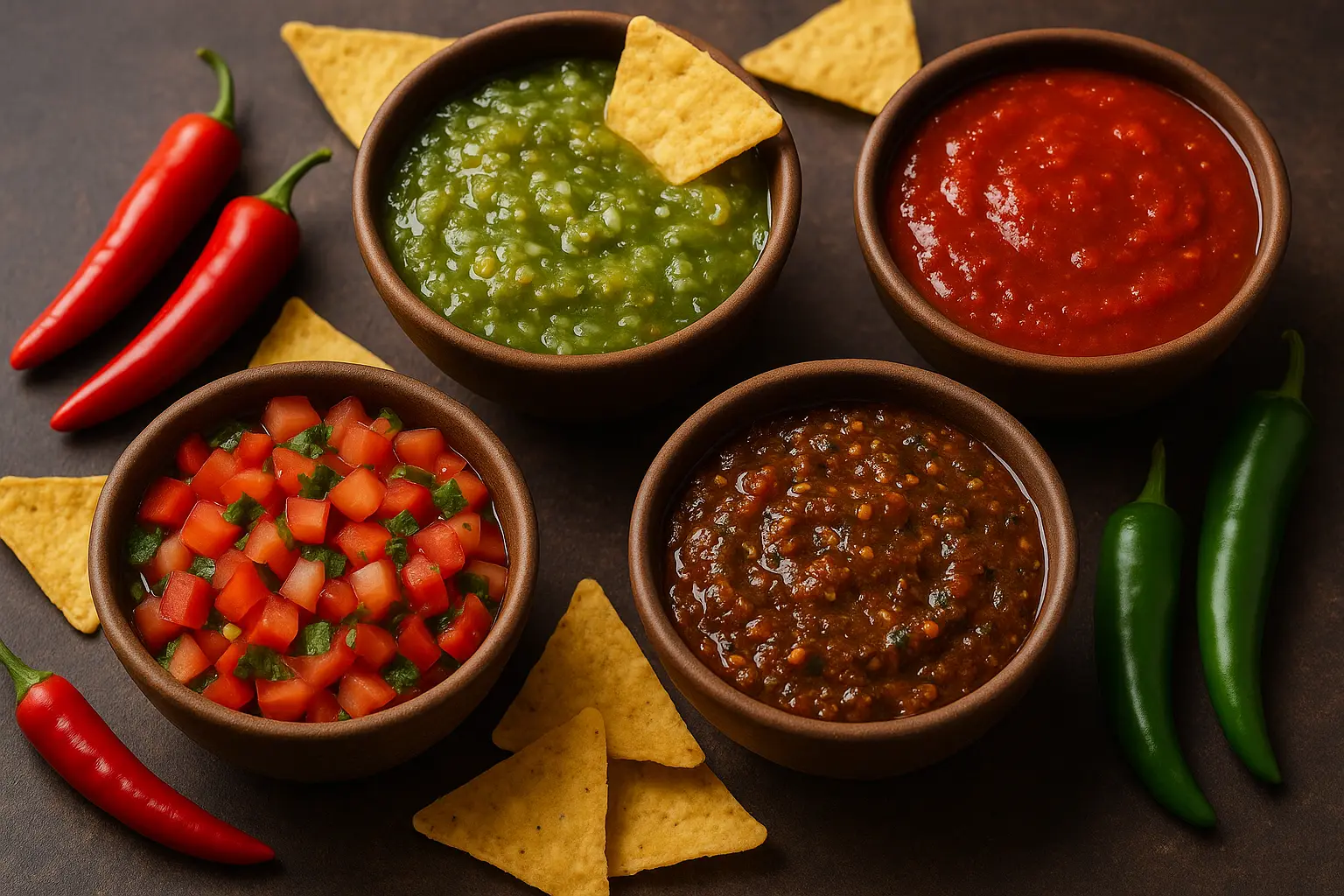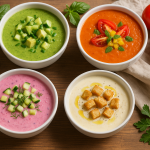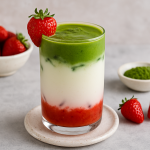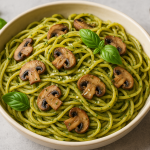For many, omelets are a breakfast staple—fluffy, filling, and endlessly customizable. But what if you’re vegan, allergic to eggs, or simply looking for a plant-based alternative? The good news: you don’t need eggs to enjoy a hearty, protein-packed omelet. With the right ingredients, you can create high-protein veggie omelets without eggs that are just as satisfying, flavorful, and versatile.
This article dives deep into how to make vegan omelets, explores different protein bases, highlights nutritious vegetable add-ins, and provides step-by-step recipes to help you perfect this breakfast favorite. Whether you’re looking for quick weekday fuel or a weekend brunch centerpiece, these egg-free omelets deliver taste and nutrition in every bite.
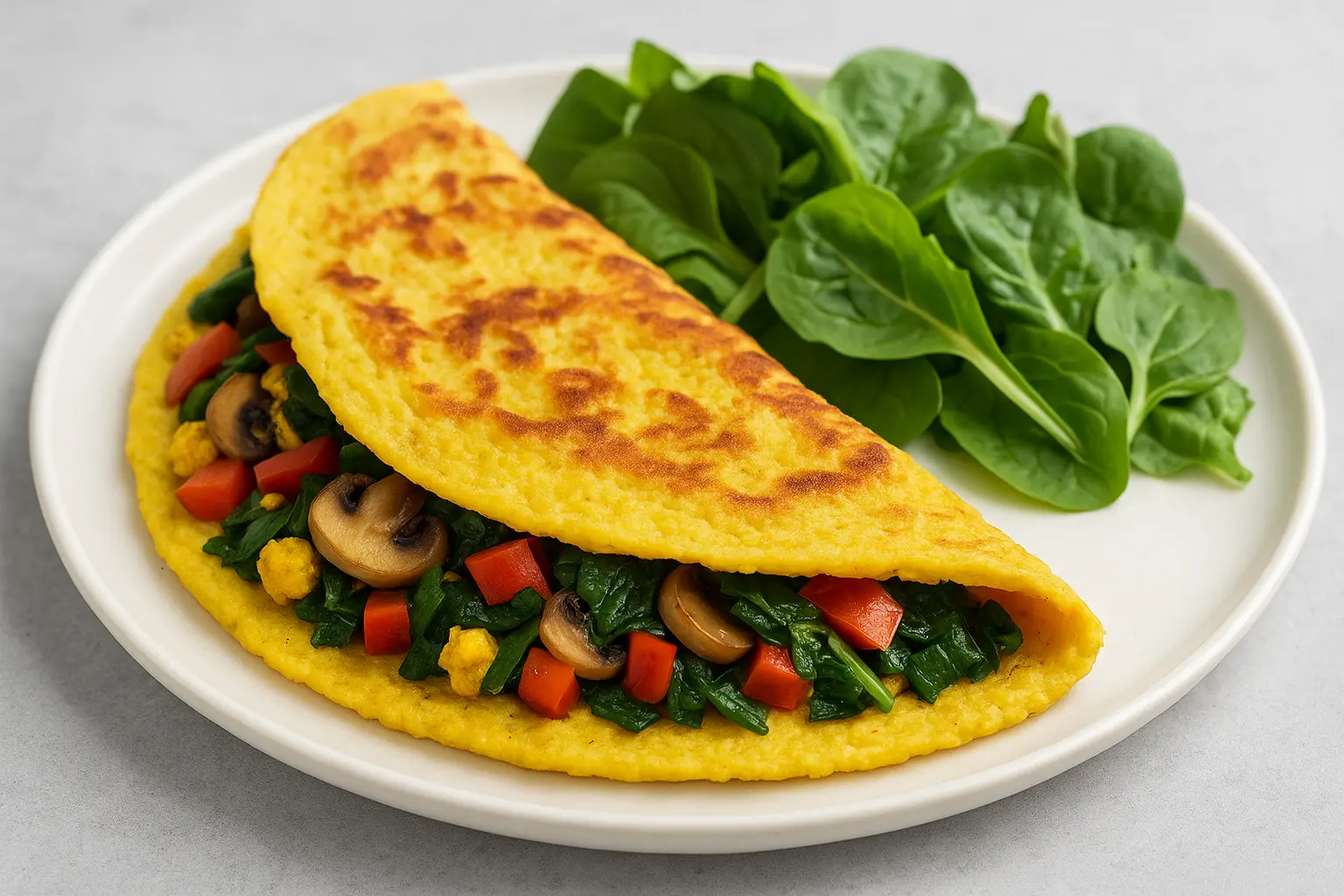
Why Choose Egg-Free Omelets?
1. For Vegans and Plant-Based Eaters
Eggs are off the menu for vegans, but breakfast should never feel limiting. Plant-based omelets prove you can still enjoy the same flavors and textures without compromising your lifestyle.
2. Health Benefits
- Cholesterol-Free: Eggs contain dietary cholesterol, but plant-based omelets don’t.
- Lower in Saturated Fat: Many vegan protein bases, like tofu or chickpea flour, are naturally lower in saturated fats.
- Rich in Fiber: Vegetables and legumes add dietary fiber that’s often missing from traditional egg dishes.
3. Dietary Restrictions
Many people avoid eggs due to allergies or intolerances. Vegan omelets are an inclusive option that suits a wide range of eaters.
4. Sustainability
Egg-free meals are often more eco-friendly, reducing the environmental footprint associated with animal farming.
Key Protein-Rich Bases for Vegan Omelets
When crafting an omelet without eggs, the base is crucial. It determines texture, flavor, and protein content. Here are the most popular options:
1. Tofu Omelet
- Why it works: Tofu’s neutral taste and ability to firm up make it ideal.
- Protein Power: ~10g protein per 100g.
- Best texture: Silken tofu creates a smooth batter, while firm tofu gives a heartier bite.
- How to use: Blend tofu with nutritional yeast, cornstarch, and seasonings to mimic an eggy flavor.
2. Chickpea Flour (Besan) Omelet
- Why it works: Chickpea flour creates a batter that cooks like a pancake but tastes savory and nutty.
- Protein Power: ~6g protein per ¼ cup.
- Best texture: Crisp edges with a soft, pancake-like center.
- How to use: Whisk chickpea flour with water, spices, and veggies for a gluten-free option.
3. Mung Bean Batter
- Why it works: Mung beans mimic eggs exceptionally well when blended into a smooth batter.
- Protein Power: ~14g protein per cooked cup.
- Best texture: Light, fluffy, and egg-like.
- How to use: Soak mung beans, blend with water and seasonings, then cook like eggs.
4. Commercial Egg Replacers
Brands like JUST Egg use mung beans or peas to create ready-made egg substitutes. They’re convenient and cook almost identically to eggs.
Essential Flavor Boosters
Creating a convincing omelet isn’t just about protein—it’s about flavor. Here are vegan-friendly seasonings to achieve that classic omelet taste:
- Nutritional Yeast: Adds cheesy, savory depth.
- Black Salt (Kala Namak): A pinch gives an authentic “eggy” sulfuric flavor.
- Turmeric: For color and subtle earthiness.
- Garlic & Onion Powder: Boost savory notes.
- Fresh Herbs: Parsley, chives, coriander, or dill brighten every bite.
Best Veggies for High-Protein Omelets
Protein-Packed Additions
- Spinach: Rich in iron and protein.
- Mushrooms: Umami-rich and meaty.
- Broccoli: Adds crunch and boosts protein.
- Green Peas: 4g protein per ½ cup.
Classic Omelet Veggies
- Bell peppers, onions, tomatoes, zucchini, and carrots work beautifully for color, crunch, and freshness.
Step-by-Step Recipes
1. Classic Tofu Veggie Omelet
Ingredients (serves 2):
- 1 block silken tofu (350g)
- 2 tbsp nutritional yeast
- 1 tbsp cornstarch
- ½ tsp turmeric
- ½ tsp black salt
- ½ tsp garlic powder
- ½ cup chopped mushrooms
- ½ cup diced bell peppers
- ½ cup spinach leaves
- 1 tbsp olive oil
Method:
- Blend tofu, nutritional yeast, cornstarch, turmeric, black salt, and garlic powder until smooth.
- Heat oil in a skillet, pour half the batter, and spread into a circle.
- Add mushrooms, peppers, and spinach on one side.
- Cook 4–5 minutes until edges firm, fold, and cook 2 minutes more.
- Serve hot with whole-grain toast.
2. Chickpea Flour Veggie Omelet
Ingredients (serves 2):
- 1 cup chickpea flour
- 1¼ cup water
- ½ tsp turmeric
- ½ tsp cumin powder
- ½ tsp black salt
- ½ cup diced tomatoes
- ½ cup chopped onions
- ½ cup spinach
- 1 tbsp oil
Method:
- Whisk flour, water, turmeric, cumin, and salt into a smooth batter.
- Heat skillet with oil, pour batter, and spread evenly.
- Sprinkle veggies on top.
- Cover and cook 5 minutes until set.
- Fold and serve with avocado slices.
3. Mung Bean Omelet with Veggies
Ingredients (serves 2):
- 1 cup split mung beans (soaked overnight)
- 1½ cups water
- 2 tbsp nutritional yeast
- ½ tsp turmeric
- ½ tsp garlic powder
- ½ cup diced zucchini
- ½ cup broccoli florets
- ½ cup red capsicum
Method:
- Blend soaked mung beans with water, nutritional yeast, turmeric, and garlic powder.
- Heat skillet, pour batter, and cook like a pancake.
- Add zucchini, broccoli, and capsicum while cooking.
- Flip carefully, cook another 3 minutes.
- Serve with fresh salsa.
Nutritional Breakdown (per serving, approx.)
- Tofu Omelet: 18g protein, 250 calories
- Chickpea Omelet: 14g protein, 230 calories
- Mung Bean Omelet: 16g protein, 240 calories
These numbers vary depending on veggies and toppings but consistently deliver high protein without eggs.
Creative Variations
- Spicy Mexican Omelet: Add jalapeños, corn, and salsa.
- Mediterranean Omelet: Use olives, sundried tomatoes, and spinach.
- Indian Masala Omelet: Add chopped chilies, onions, coriander, and curry spices.
- Protein Boost: Add hemp seeds, pumpkin seeds, or vegan cheese shreds.
Serving Suggestions
- Pair with avocado toast for healthy fats.
- Serve alongside roasted potatoes for a hearty brunch.
- Roll into a wrap for on-the-go breakfast.
- Top with vegan sour cream or salsa for extra flavor.
Tips for Perfect Egg-Free Omelets
- Nonstick Pan is Key – Prevents sticking and ensures easy flipping.
- Cook on Medium Heat – Too high and the omelet may burn before cooking through.
- Don’t Overstuff with Veggies – Add just enough to fold easily.
- Experiment with Flavors – Try smoked paprika, curry powder, or even miso paste.
Conclusion
Eggs aren’t the only way to make a protein-rich omelet. With tofu, chickpea flour, mung beans, and creative add-ins, you can craft vegan omelets that are delicious, nutritious, and versatile. They’re quick to prepare, customizable for any cuisine, and suitable for everyone—from health-conscious eaters to those seeking comfort food.
So next time you crave a fluffy omelet, reach for these egg-free, high-protein veggie versions. Your taste buds (and body) will thank you.
Leave a comment
Your email address will not be published. Required fields are marked *


